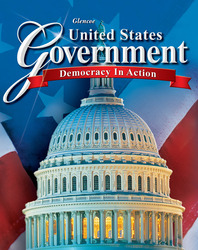United States Government: Democracy in ActionChapter 25:
Political Systems in Today's WorldStudent Web Activity Lesson PlansIntroduction
Political scientists call countries with well-established democratic governments like the United States consolidated democracies. Such nations have fair elections, competing political parties, a constitutional government that guarantees individual rights, an independent judiciary, and some form of a market economy. In this activity, students will learn about the trend of democracies today. Lesson Description
Students will explore a Web site about countries with democracies, and answer four questions. Students will then place regions on a continuum from "no democracy" to "liberal, consolidated democracy." Instructional Objectives
- Learners will identify the number of democracies today.
- Learners will contrast electoral democracies with liberal democracies.
- Learners will define consolidated democracy.
- Learners will classify regions on a continuum from "no democracy" to "liberal, consolidated democracy."
|
Student Web Activity Answers
- By 1950, 22 of the 80 sovereign political systems in the world (28 percent) were democracies. By January 2000, there were 120 democracies, or 63 percent.
- The document notes crises in law, ethnic and religious strife, and economic problems: "One crisis is a decimated rule of law, including a weak, politicized, corrupt, and ineffectual judiciary, and the absence of other workable institutions to restrain the exercise of state power and hold it accountable. A second stems from ethnic, religious, and regional divisions that the national state is incapable of managing peacefully, resulting in a rising tide of political violence and human rights violations. The third crisis is economic, stemming from the inability of a depleted, administratively corrupt, and inept state to implement the reforms that are badly needed to liberalize and privatize the economy and so encourage domestic and foreign investment.
- Electoral democracies have one requirement: "regular, free, and fair elections between competing parties" with the possibility that the ruling government may lose the election. Liberal democracies include free elections plus the following: "freedom of belief, expression, organization, and demonstration; protection from political terror and unjustified imprisonment; rule of law under which all citizens are treated equally and due process is secure; political independence and neutrality of the judiciary and of other institutions of "horizontal accountability" that check the abuse of power; open, pluralistic civil society; and civilian control over the military.
- According to the document, democracies are consolidated when "all significant political elites, parties, and organizations—as well as an overwhelming majority of the mass public—are firmly committed to the democratic constitutional system and regularly comply with its rules and constraints."
- The regions should be placed on the continuum in a way similar to the following:
No Democracy (from left to right)—Middle East and North Africa; Former Soviet Union; Africa (sub-Saharan)
Electoral Democracy (from left to right)—Asia (East, Southeast, South); South America; Latin America and Caribbean; Eastern and Central Europe and Baltic states
Liberal, Consolidated Democracy (from left to right)—Pacific islands; Western Europe and Anglophone states
|
 |  |





